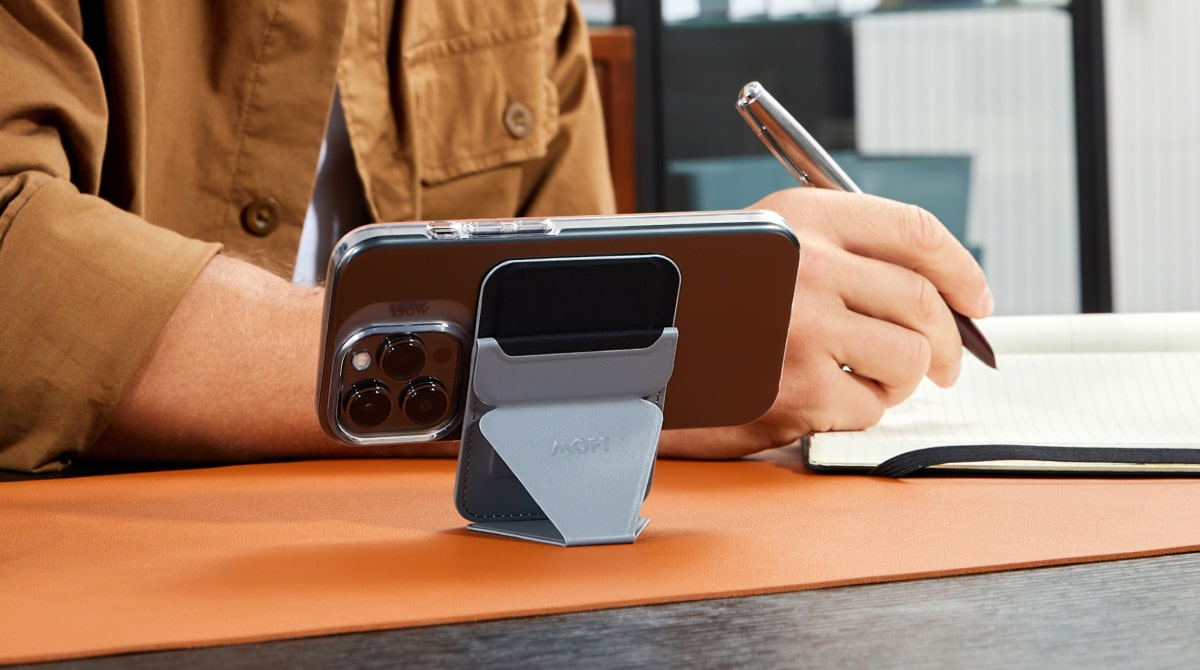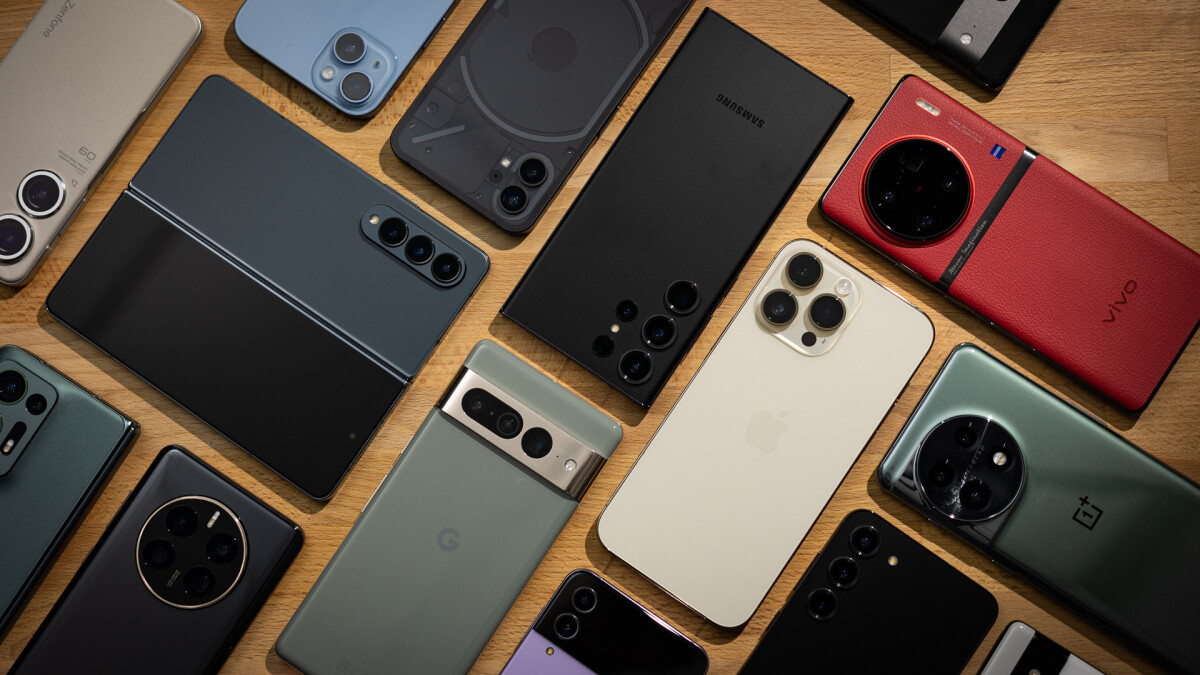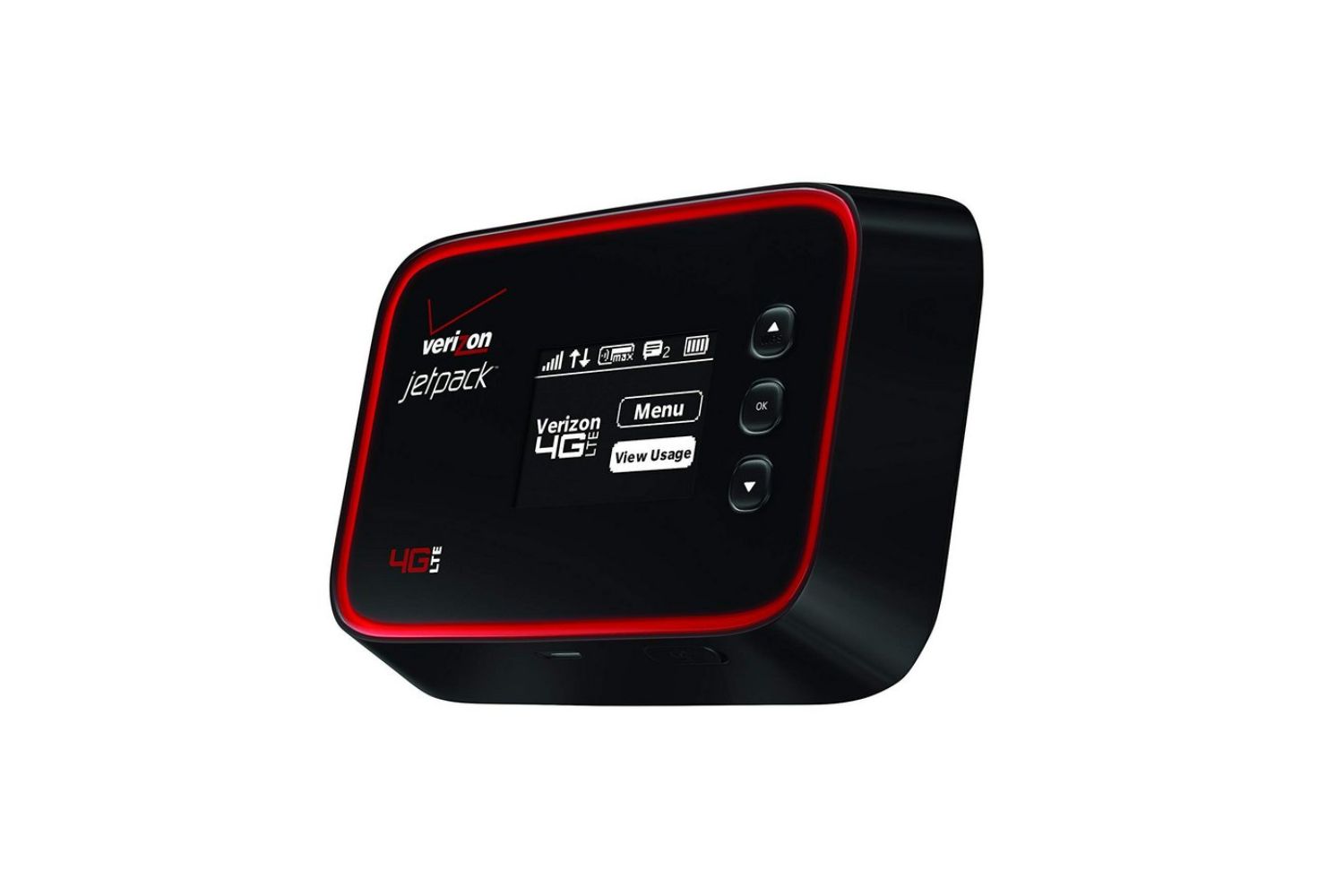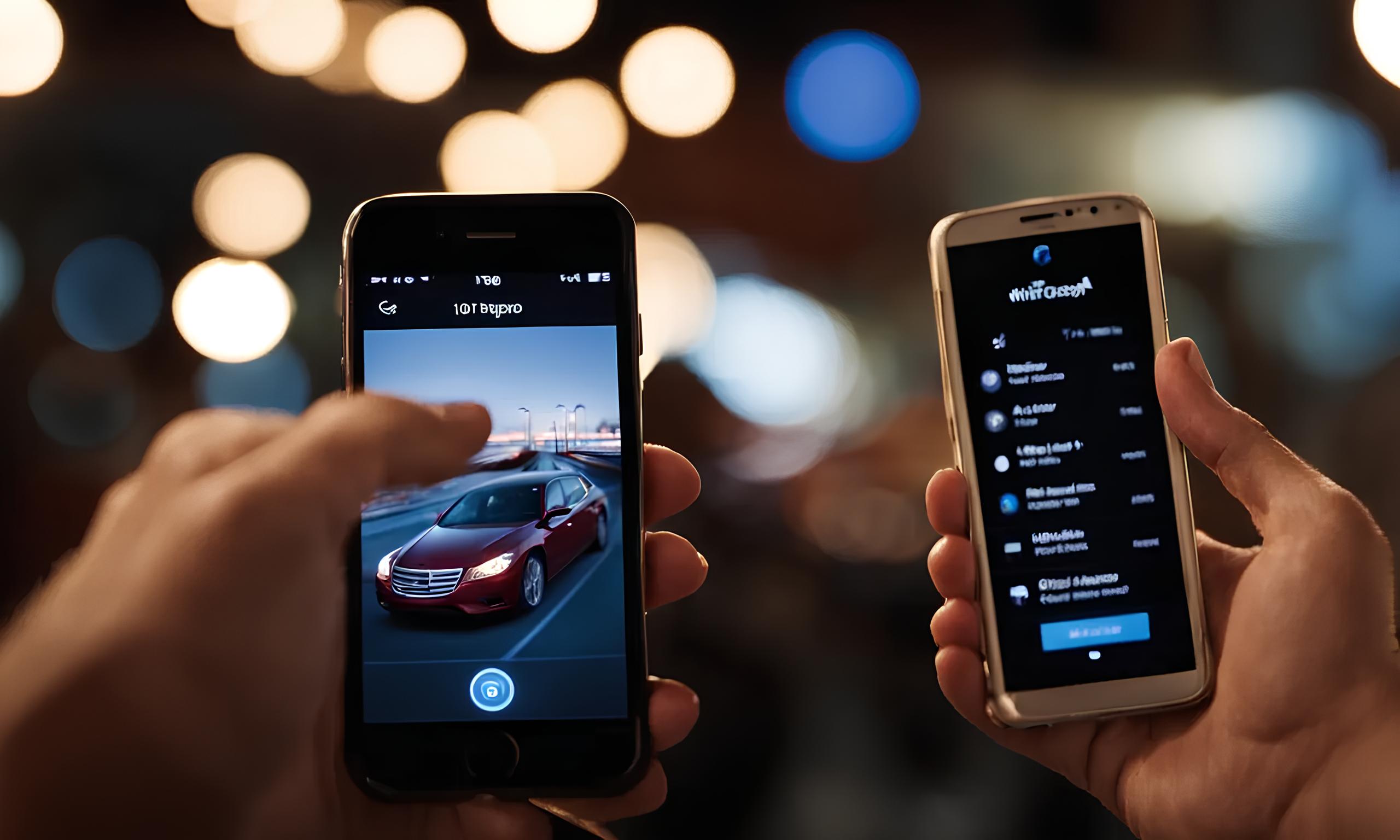Introduction
The hotspot feature on your device is a convenient tool that allows you to share your mobile data connection with other devices, such as laptops and tablets. However, encountering a grayed-out hotspot option can be frustrating and may hinder your ability to utilize this useful function. Fortunately, there are several troubleshooting steps you can take to address this issue and restore the functionality of your hotspot.
In this article, we will explore common causes of the hotspot grayed-out problem and provide practical solutions to help you resolve it. Whether you're experiencing this issue on your iPhone, iPad, or Android device, understanding the underlying reasons and implementing the appropriate troubleshooting steps can help you regain access to your hotspot feature.
By following the recommendations outlined in this article, you can effectively troubleshoot the grayed-out hotspot problem and ensure that you can once again utilize this feature to connect your devices and stay connected on the go.
Let's dive into the troubleshooting process and explore the steps you can take to address the grayed-out hotspot issue on your device.
Checking Network Connection
When encountering the frustrating issue of a grayed-out hotspot, the first step in troubleshooting involves checking the network connection on your device. A stable and reliable network connection is essential for the proper functioning of the hotspot feature. Here are the steps you can take to ensure that your network connection is not the root cause of the problem:
-
Wi-Fi and Cellular Data: Begin by confirming that both your Wi-Fi and cellular data connections are active and functioning properly. If you are attempting to use the hotspot feature over Wi-Fi, ensure that your device is connected to a stable Wi-Fi network. Similarly, if you intend to use cellular data for the hotspot, verify that your device has an active cellular data connection with adequate signal strength.
-
Airplane Mode: Check whether your device is in Airplane Mode, as this setting disables wireless communication functions, including the hotspot feature. If Airplane Mode is enabled, disable it and observe if the hotspot option becomes accessible.
-
Network Signal Strength: Inadequate network signal strength can also impact the availability of the hotspot feature. If you are in an area with poor network coverage, consider relocating to a spot with better signal reception. Alternatively, if you are using cellular data for the hotspot and experiencing connectivity issues, moving to an area with stronger cellular signal can potentially resolve the problem.
-
Network Congestion: High network congestion can sometimes lead to connectivity issues, including a grayed-out hotspot option. If you are in a densely populated area or an area with heavy network usage, wait for a period of lower network activity and attempt to access the hotspot feature again.
-
Device Compatibility: Ensure that the device you are attempting to connect to the hotspot is compatible with the network type and frequency bands supported by your device. Incompatibility between devices can lead to connectivity issues and may result in the hotspot option appearing grayed out.
By thoroughly checking the network connection on your device and addressing any issues related to Wi-Fi, cellular data, network signal strength, and device compatibility, you can eliminate potential network-related causes of the grayed-out hotspot problem. Once you have confirmed that the network connection is stable and functioning as expected, you can proceed to explore additional troubleshooting steps to resolve the issue and restore access to the hotspot feature.
Taking the time to meticulously assess the network connection lays a solid foundation for the subsequent troubleshooting efforts, allowing you to methodically identify and address the underlying factors contributing to the grayed-out hotspot dilemma.
Updating Device Software
Ensuring that your device's software is up to date is a crucial step in troubleshooting the grayed-out hotspot issue. Software updates often include bug fixes, performance enhancements, and improvements to system functionality, which can directly impact the availability and functionality of the hotspot feature. Here's a detailed look at the process of updating your device's software to address the grayed-out hotspot problem:
-
Check for System Updates: Begin by accessing the settings menu on your device and navigating to the software update section. For iPhone and iPad users, this can be found under "Settings" > "General" > "Software Update." Android users can typically find the software update option in the "Settings" menu, often under "About phone" or "System updates." Check for any available updates for your device's operating system and initiate the update process if updates are available.
-
Download and Install Updates: If a software update is available for your device, proceed to download and install it. Ensure that your device is connected to a stable Wi-Fi network and has an adequate battery charge to support the update process. Follow the on-screen prompts to download and install the update, and allow your device to complete the update installation.
-
Restart Your Device: Once the software update is successfully installed, restart your device to ensure that the changes take effect. Restarting your device can help finalize the update process and ensure that any underlying software issues impacting the hotspot feature are effectively addressed.
-
Verify Hotspot Accessibility: After restarting your device, check whether the hotspot option is now accessible and no longer grayed out. Attempt to enable the hotspot feature and verify that it functions as expected. If the hotspot option is now available and functional, the software update may have resolved the underlying software-related issues causing the grayed-out hotspot problem.
-
Additional Considerations: In some cases, if your device's software was significantly outdated prior to the update, it may take some time for the system to stabilize and for all functionalities, including the hotspot feature, to fully normalize. Allow some time for the updated software to settle in and for any residual connectivity issues to resolve.
By proactively updating your device's software, you can leverage the latest system improvements and bug fixes to potentially address the grayed-out hotspot issue. Software updates are designed to enhance the overall performance and stability of your device, and addressing any underlying software-related factors can play a pivotal role in restoring the functionality of the hotspot feature.
Taking the initiative to keep your device's software up to date not only addresses immediate issues such as the grayed-out hotspot problem but also contributes to the overall security and performance of your device. It is an essential aspect of device maintenance and can help ensure that you consistently experience optimal functionality across all features and capabilities.
Resetting Network Settings
Resetting the network settings on your device is a strategic troubleshooting step that can effectively address the grayed-out hotspot problem. This process involves reverting network-related configurations to their default state, potentially resolving underlying connectivity issues and restoring the functionality of the hotspot feature. Here's an in-depth exploration of the process of resetting network settings and its potential impact on resolving the grayed-out hotspot issue:
-
Accessing Network Settings: Begin by navigating to the settings menu on your device. Depending on the device type and operating system, the location of the network settings may vary. Typically, for iPhone and iPad users, the network reset option can be found under "Settings" > "General" > "Reset." Android users can often locate the network reset option within the "Settings" menu, usually under "System" or "General Management."
-
Initiating Network Reset: Once you have accessed the network settings, look for the option to reset network settings. This action will restore all network-related configurations, including Wi-Fi, cellular, Bluetooth, and VPN settings, to their default values. It's important to note that performing a network reset will erase stored Wi-Fi passwords and Bluetooth pairings, so be prepared to re-enter this information after the reset process is complete.
-
Confirming Network Reset: Prior to initiating the network reset, the device will typically prompt you to confirm your decision. This serves as a safeguard against accidental network resets. Confirm your intent to proceed with the network reset, and allow your device to execute the reset process.
-
Restarting Your Device: Following the network reset, it is advisable to restart your device. Restarting the device allows the system to apply the reset configurations and finalize the network reset process. This step is crucial in ensuring that the network settings are fully reset and any lingering connectivity issues are effectively addressed.
-
Verifying Hotspot Accessibility: After restarting your device, check whether the hotspot option is now accessible and no longer grayed out. Attempt to enable the hotspot feature and verify that it functions as expected. If the hotspot option is now available and functional, the network reset may have successfully resolved the underlying network-related issues causing the grayed-out hotspot problem.
By proactively resetting the network settings on your device, you can potentially eliminate configuration conflicts, network inconsistencies, or other underlying factors contributing to the grayed-out hotspot issue. This troubleshooting step serves as a comprehensive reset of all network-related parameters, offering a fresh start for network connectivity and potentially resolving the hotspot accessibility issue.
Taking the proactive approach of resetting network settings demonstrates a commitment to thorough troubleshooting and can yield positive outcomes in restoring the functionality of the hotspot feature. It is an essential step in addressing network-related issues and ensuring that your device's connectivity features operate optimally.
Incorporating the network reset process into your troubleshooting efforts provides a holistic approach to resolving the grayed-out hotspot problem, leveraging the potential impact of network configuration adjustments to restore seamless connectivity and access to the hotspot feature.
Checking for Carrier Settings Update
Checking for carrier settings updates is a crucial step in troubleshooting the grayed-out hotspot issue, especially for mobile devices that rely on carrier network configurations to enable certain features. Carrier settings updates are released by mobile network operators to implement changes, enhancements, and optimizations to the network settings on compatible devices. By ensuring that your device has the latest carrier settings, you can potentially address network-related issues that may be contributing to the unavailability of the hotspot feature.
Here's a detailed exploration of the process of checking for carrier settings updates and its potential impact on resolving the grayed-out hotspot problem:
-
Accessing Carrier Settings: Begin by accessing the settings menu on your device. Depending on the device type and operating system, the location of the carrier settings update option may vary. For iPhone and iPad users, the carrier settings update option can typically be found under "Settings" > "General" > "About." Android users may find the carrier settings update option within the "Settings" menu, often under "System" or "About phone."
-
Initiating Carrier Settings Update Check: Once you have accessed the relevant settings section, look for the option to check for carrier settings updates. This action triggers the device to communicate with the mobile network operator's servers and verify if any updates are available for your device's carrier settings.
-
Downloading and Installing Updates: If a carrier settings update is available for your device, follow the on-screen prompts to download and install the update. It's essential to ensure that your device is connected to a stable Wi-Fi network or has a reliable cellular data connection to support the update process.
-
Restarting Your Device: After installing the carrier settings update, it is advisable to restart your device. Restarting the device allows the updated carrier settings to take effect and ensures that any network-related adjustments are fully implemented.
-
Verifying Hotspot Accessibility: Following the device restart, check whether the hotspot option is now accessible and no longer grayed out. Attempt to enable the hotspot feature and verify that it functions as expected. If the hotspot option is now available and functional, the carrier settings update may have successfully resolved the underlying network-related issues causing the grayed-out hotspot problem.
By proactively checking for carrier settings updates, you can leverage the latest network optimizations and configurations provided by your mobile network operator. These updates are designed to enhance network performance, address connectivity issues, and ensure the seamless operation of features such as the mobile hotspot.
Incorporating the process of checking for carrier settings updates into your troubleshooting efforts demonstrates a proactive approach to addressing network-related issues. By staying current with the latest carrier settings, you can optimize your device's compatibility with the carrier network and potentially resolve the grayed-out hotspot problem, allowing you to seamlessly utilize the hotspot feature to connect your devices and stay connected on the go.
Resetting Location and Privacy Settings
Resetting the location and privacy settings on your device is a strategic troubleshooting step that can potentially address the grayed-out hotspot problem. Location and privacy settings govern the access permissions granted to various apps and services on your device, and inconsistencies or conflicts within these settings can impact the functionality of features such as the hotspot. By resetting these settings to their default state, you can effectively eliminate potential configuration conflicts and restore the proper operation of the hotspot feature.
Here's a detailed exploration of the process of resetting location and privacy settings and its potential impact on resolving the grayed-out hotspot issue:
-
Accessing Location and Privacy Settings: Begin by navigating to the settings menu on your device. Depending on the device type and operating system, the location of the location and privacy settings may vary. Typically, for iPhone and iPad users, the location and privacy settings can be found under "Settings" > "Privacy." Android users may find these settings within the "Settings" menu, often under "Privacy" or "Security."
-
Locating Reset Options: Within the location and privacy settings section, look for the option to reset or restore these settings to their default state. This action will revert access permissions and privacy configurations to their original values, potentially resolving any conflicts that may be impacting the availability of the hotspot feature.
-
Initiating Reset: Upon locating the reset option, initiate the process to reset location and privacy settings. The device may prompt you to confirm your decision before proceeding with the reset. Confirm your intent to reset these settings, and allow your device to execute the reset process.
-
Restarting Your Device: Following the reset of location and privacy settings, it is advisable to restart your device. Restarting the device allows the system to apply the reset configurations and finalize the location and privacy settings reset process. This step is crucial in ensuring that any lingering conflicts are effectively addressed.
-
Verifying Hotspot Accessibility: After restarting your device, check whether the hotspot option is now accessible and no longer grayed out. Attempt to enable the hotspot feature and verify that it functions as expected. If the hotspot option is now available and functional, the reset of location and privacy settings may have successfully resolved the underlying conflicts causing the grayed-out hotspot problem.
By proactively resetting the location and privacy settings on your device, you can potentially eliminate access conflicts and privacy-related issues that may be impacting the availability of the hotspot feature. This troubleshooting step serves as a comprehensive reset of permissions and access configurations, offering a fresh start for app and service interactions and potentially resolving the hotspot accessibility issue.
Incorporating the reset of location and privacy settings into your troubleshooting efforts provides a holistic approach to resolving the grayed-out hotspot problem, leveraging the potential impact of access permission adjustments to restore seamless connectivity and access to the hotspot feature.
Contacting Apple Support
If you have diligently followed the troubleshooting steps outlined in this article and are still encountering the persistent issue of a grayed-out hotspot on your iPhone or iPad, reaching out to Apple Support is a recommended course of action. Apple Support offers a dedicated team of experts who can provide personalized assistance and guidance tailored to your specific device and software configuration. When initiating contact with Apple Support, it's essential to provide detailed information about the troubleshooting steps you have already undertaken, including any relevant observations or changes in the behavior of the hotspot feature.
Direct Support Channels
Apple offers multiple avenues for users to seek support, including online chat support, phone support, and in-person appointments at Apple Store locations. Utilizing these direct support channels allows you to engage with Apple's support specialists, who possess in-depth knowledge of iOS devices and can provide targeted assistance in diagnosing and resolving the grayed-out hotspot issue.
Detailed Description of the Issue
When contacting Apple Support, clearly articulate the specific symptoms and behaviors associated with the grayed-out hotspot problem. Detail any error messages, unusual behaviors, or patterns of occurrence related to the issue. Providing a comprehensive overview of the problem enables the support team to gain a thorough understanding of the situation and facilitates a more effective troubleshooting process.
Disclosure of Troubleshooting Steps
Communicate the troubleshooting steps you have already undertaken, such as network connection checks, software updates, network settings resets, and carrier settings updates. Sharing this information with Apple Support demonstrates your proactive approach to resolving the issue and prevents redundant troubleshooting efforts, allowing the support team to focus on advanced diagnostics and targeted solutions.
Device and Software Information
Be prepared to provide details about your device model, iOS version, and any relevant network carrier information. This information helps Apple Support assess the specific configuration and environment in which the grayed-out hotspot issue is occurring, enabling them to tailor their support recommendations to your unique setup.
Openness to Further Guidance
Remain open to further guidance and recommendations from Apple Support. Their expertise and access to advanced diagnostic tools can uncover underlying causes of the grayed-out hotspot problem that may require specialized solutions or software adjustments. By collaborating with Apple Support and following their guidance, you can maximize the potential for a successful resolution of the issue.
In summary, contacting Apple Support serves as a valuable resource for addressing persistent technical issues such as the grayed-out hotspot problem. Their specialized expertise and personalized assistance can provide the necessary support to diagnose and resolve the issue, ultimately restoring the full functionality of the hotspot feature on your iPhone or iPad.

























